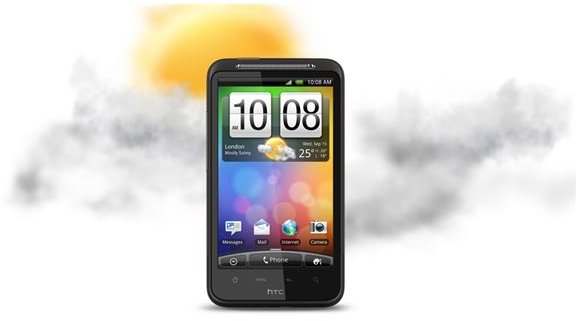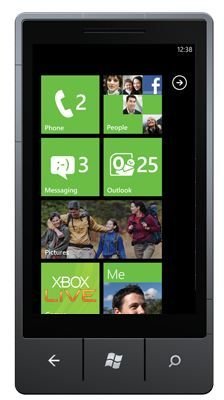Android Versus Windows Phone 7
Android is Better Than Windows Phone 7
It’s too early to compare the Android OS with Windows Phone 7 because the latter is fairly new in the market. But this won’t stop us from looking closely into what each of these platforms can provide for consumers. And through the process, we’ve come to the conclusion that in the Android versus Windows Phone 7 premise, Android beats Windows Phone 7 - big time. Read on to find out why.
Homescreen Features
As you know by now, Android followed the iOS approach by making the Android platform app-based. That is, the Android homescreen can be populated with as many Android apps as you can possibly fit in addition to widgets and shortcuts. Depending on your Android phone, you can have as many as seven homescreens filled up with Android apps, widgets and shortcuts. This approach proved successful for the Android platform and this is the bread and butter of Apple’s iOS.
Interestingly, Microsoft decided to take a different approach to the Windows Phone 7 homescreen. Instead of having multiple screens filled with apps, Windows Phone 7 only has one main screen containing functional hubs or tiles which are interactive as well. By this we mean, depending on what these tiles contain, they are refreshed wirelessly via the web. You pin appointments, news and weather, apps and other information on these tiles to make them functional and useful. This is somewhat similar to the Android widgets which you can add to your Android phone’s homescreen.
Obviously, Microsoft doesn’t want to ride on the popularity of the app-based ecosystem. While this is a “fresher” approach, users who are planning to transition from the Android platform to Windows Phone 7 might find this a little bit off-tangent and it could discourage them to continue with the shift.
On the other hand, this could also encourage some smartphone users, especially those who want a more professional looking homescreen than what Android has to offer.
Applications

Of course when it comes to the availability of applications, Android beats Windows Phone 7 big time. Well, that’s because the Android platform has been around longer than Windows Phone 7. When it comes to the apps market, both have a pretty good applications market infrastructure. But how does the competition look when it comes to quality of apps? We couldn’t say too much about this yet because there are few Windows Phone 7 apps available so far.
The key here is whether third-party application support is similar in both the Windows Marketplace and the Android Market. Is the Windows Marketplace as open as the Android Market? This will play a crucial role in Windows Phone 7’s success or failure.
Phone Line Up
There are pretty good Windows Phone 7 launch units which could match up to the best Android phones around. Microsoft is making sure that only the top class Windows Phone 7 units are manufactured and made available. Thanks to the minimum specs for Windows Phone 7 devices which Microsoft set. These specs are pretty decent for a smartphone and definitely higher than what is expected of Android phones.
Will this be advantageous to Windows Phone 7? Well, if Microsoft is gearing up Windows Phone 7 for business and enterprise use, then the strategy may pay off well. But when it comes to numbers, this may prove otherwise for Windows Phone 7. One of the reasons why Android is eating up a big chunk of the smartphone market rapidly is because of the many options given to users who are getting Android phones.
There are as many affordable Android phones as there expensive units. Android is trying to capture the whole smartphone userbase and their approach is gradually affecting Android’s clout in the smartphone business.
Can Microsoft achieve the same? We’re not counting on it.
Other Features
When it comes to other useful features, Android definitely beats Windows Phone 7 hands-down. Internet tethering and the ability to turn your Android phone into a mobile hotspot are two features that you might expect Windows Phone 7 to have but it doesn’t. Android implemented both rather flawlessly.
Another area where Android beats Windows Phone 7 is the external storage. Simply put, Android phones can support microSD cards up to 32GB or even 64GB. Unfortunately, Windows Phone 7 units can only provide up to 16GB internal storage. And don’t even go to the cloud storage via Windows Live being offered by Microsoft. That’s nothing compared to what you can store in your Android phone’s SD card storage.
Copy and paste functionality and foldering of apps is also a plus point for Android as Microsoft doesn’t have them. These are two important features that Microsoft seems to have forgotten.
Conclusion
It’s really too early to tell whether Microsoft can re-enter the smartphone market and possibly eat the share of other platforms. But that won’t stop us from reiterating the obvious. That - as of right now, Android is way better than Windows Phone 7. We’re not saying Windows Phone 7 is not good. In fact, it is. But Microsoft needs to do some work on its Windows Phone 7 strategy to recapture its lost glory.
Windows Phone has all the potential to compete with the market leaders - Apple, RIM and Android. But it has a long way to go before Windows Phone 7 climbs up to where these mobile platforms are right now. Microsoft has already taken one correct step by making Windows Phone 7 available with some nice launch smartphone units. A follow-up with better specs should happen as soon as possible.
If you want to read an alternative perspective on why Windows Phone 7 is better than Android, read our previous article.
